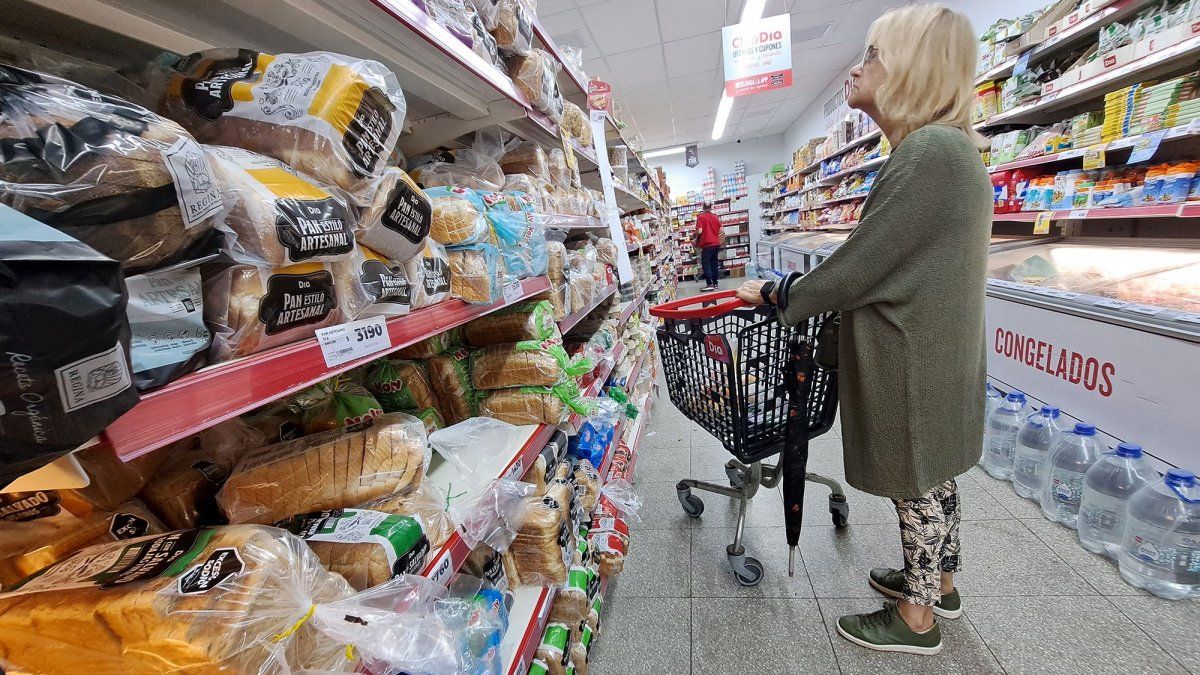The fall in wages is also reflected in the decline in sales in large stores, even though their shelves offer basic necessities. Food, meats, dairy, snacks, alcoholic beverages and home appliances: to a greater or lesser extent, “everything falls”.
According to the consulting firm Scentia, in May the sales in all the channels collapsed 10% in year-on-year terms – in April the decline had been 13.8%-, with a decrease of 10.5% in the chains and of 9.5% in self-service stores. In this way, the general contraction accumulated in the first five months of the year is close to 8%.
“If there is an improvement, it will be towards the end of the year, but that will not change the closing of 2024, which We see a negative between 7% and 8% compared to 2023“, based on forecasts that economic consulting firms model with our data,” said Scentia’s head, Osvaldo del Río, two weeks ago.
It is important to clarify that both Del Río and other sources in the sector clarify that the most complete measurement to understand the evolution of consumption is the interannual and accumulated one, not the one that shows the intermonthly dynamics, because between one month and another there may be a greater number of days or the presence of holidays.
In June, the scenario is at least similar. It could even be worse. It will depend on the latest data from the fourth week of the previous month, which will possibly mark an upturn, since the bank promotionsoffers 2×1 either discounts in second or third units.
The longing for fair prices
The drop recorded in the first three weeks of June compared to the same period last year is estimated at 11.5%, according to a private survey of the sector. Do you miss Fair Prices? There is something of that.
“With Fair Prices we moved products in quantity and we had reasonable profit margins“They confess in the supermarket.
Prior to its elimination, President Javier Milei had described the price control programs as “an aberration”. Food industry entrepreneurs pointed out the program’s drawbacks, warning that arrears from up to 70% in some products.
Supermarket owners remember that the flip side of Fair Prices was suppliers “delaying the delivery of the merchandise”, offering products at differential prices on the condition of buying others outside the program, or directly “do not deliver the stock”.
The food sector swore to respect the planned increases and claimed that the markups came from the big chains.Like Moreno: open the balance sheets and we’ll see“, they contrast in the sector.
The truth is that, from both sides of the counter, everyone points to the insurmountable decline in sales of food and hygiene and cleaning products. At least not to the extent that makes them think they will reach, at least, the same as what was sold in 2023. On the contrary, one interlocutor in the sector sharpens his gaze and warns completely: “We are falling into the abyss”.
For this reason they hold sporadic meetings with Pablo LavigneSecretary of Commerce. Not only to propose solutions to the drop in sales, but also to question the “hindering” of the application of municipal rates in the tax scheme, or the “cumbersome“to break down taxes into receipts for each consumer purchase.
Once the demands and questions have been raised, the businessmen leave with more doubts than answers. They recognize that Lavigne and Pazo (Secretary of Productive Development) maintain good listening and take the comments into consideration, but the lack of resolution causes the meetings to “serve more as self-help circles”, which is a pragmatic working meeting.
The policy of importing products with tax benefits did not show great results either. The objective sought was to lower inflation by inserting more competitive prices on the shelves.
Although there are imported foods that can be cheaper than domestic ones, the tax burden and transportation costs significantly reduce the price gap, according to the sector. At the moment, the list of imported products is limited: supermarkets mostly register bread from Brazil, dry pasta from Italy, canned tomato sauce and some chocolates.
Less work, more layoffs?
Finally:How does this situation impact the payroll of workers in the sector?Although there are no significant number of layoffs, there are no new hires either.
On the subject, they make a note based on the approval of the severance payincluded in the Law Bases: a calculation by the sector indicates that the payment of compensation represents 2% of the wage bill. The implementation of what was approved in the mega project would increase that percentage to 8%.
The unemployment fund included in the labor chapter could be implemented only through collective bargaining agreementIt is based on the construction model (UOCRA), which works like this: the employer deposits 12% of the salary monthly into the fund during the first year of the employment relationship and 8% from the second year onwards.
Last December 27th was Armando Cavalierihead of the Commerce union, who had announced that they would adhere to the new compensation system. This does not seem to be the idea of the business community.
The dynamics of increases marked a new deceleration in June and inflation in this area was located at 3.6%according to Eco Go. Weekly records showed a average variation of 0.8%with records less than 1% every week except the second, where an increase of 1.2% was recorded.
How food prices evolved in June
The meats remained practically unchanged, and closed the month with an increase of 3.9%, according to the consultancy. fruit registered a decrease of 6.5%, while the vegetables a rise of 6.7%. Meanwhile, baked goods, cereals and pastas had an increase of 8.9%, driven by the price of fresh bread (15.7%) and the bills (11.2%).
Source: Ambito




